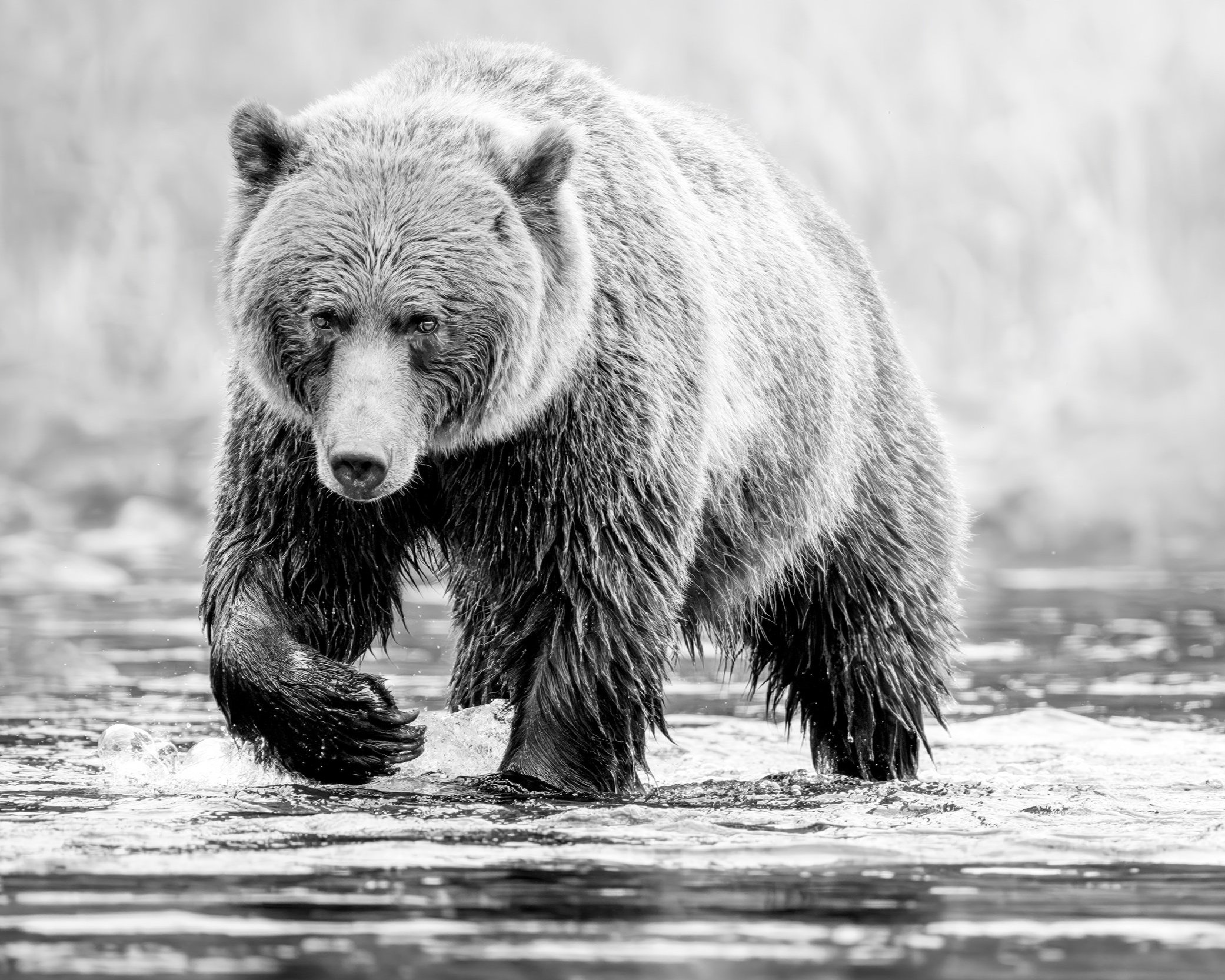The floatplane settled onto Chilko Lake with a soft hiss—sky folding into water. It was a kind of silence I hadn’t heard in years. Not empty, but full. Full of movement in the trees, wind skimming the water, ravens calling from deep within the valley. You step off the plane and immediately know: You’re not at the centre here. You’re a guest.
That feeling never left.
We came to photograph grizzly bears—but what I captured became something more. These weren’t wildlife snapshots. Each image began to take on the shape and structure of a fine art piece. Not staged, of course, but deeply considered. Composed. Each bear framed by nature in a way that felt deliberate—as if the landscape itself was curating the moment. I found myself raising the camera and wondering: Is this a photograph or a painting?
There’s one frame that still stays with me. A grizzly stands almost motionless, his pelt echoing the shattered lines of a fallen pine. Around him, broken branches and twisted bracken create a pattern so intricate you can’t tell where fur ends and forest begins. Another time, from a hillside of late summer grass, I caught the eyes of a bear peering through a lattice of thorns and bent twigs—his gaze both veiled and piercing. The entire scene held the quiet complexity of brushwork. Layers of depth, light, texture—like oil on canvas, except it was real. Wild. Alive.
That became a recurring theme. Bears rising from riverbanks, stepping over sun-bleached logs, their fur mirroring the wood grain and moss. It was as if they belonged to the land not just biologically, but artistically—as though the mountain painted them into being.
And all of this happened within breath’s reach. No cages. No blinds. No barriers. Just shared space and mutual respect. I remember watching a sow graze with her cub, their bodies luminous in the low golden light, and hearing the softness of their breath. That closeness shifts something in you. You stop thinking about the shot and start thinking about presence. It’s not adrenaline. It’s reverence.
What I was capturing wasn’t just wildlife—it was identity. Sovereignty. The stillness between us wasn’t empty; it was charged with a knowing that I was being watched, just as I was watching. And in that moment of eye contact, framed by fractured branches and scattered pine needles, I felt the entire weight of what it means to be in the wild, not simply observing it.
These field notes are a kind of map back to that experience. To the soft margins of a world we are quickly closing in on. These bears—these guardians—are symbols of something greater than strength. They are emblems of endurance, yes, but also of balance. They remind me that power doesn’t always announce itself. Sometimes it lies curled in a shaft of light, half-hidden behind a log, waiting to be seen for what it truly is.
And the photographs—they are not simply records. They are portraits of a disappearing reality. Composed in real time, by wildness itself. Each one a reminder that the natural world is not chaotic. It is composed. Designed. Beautifully, unbearably fragile.
To witness it, to photograph it with this level of intimacy, is to accept responsibility. And to carry it forward—in print, in memory, in story.








